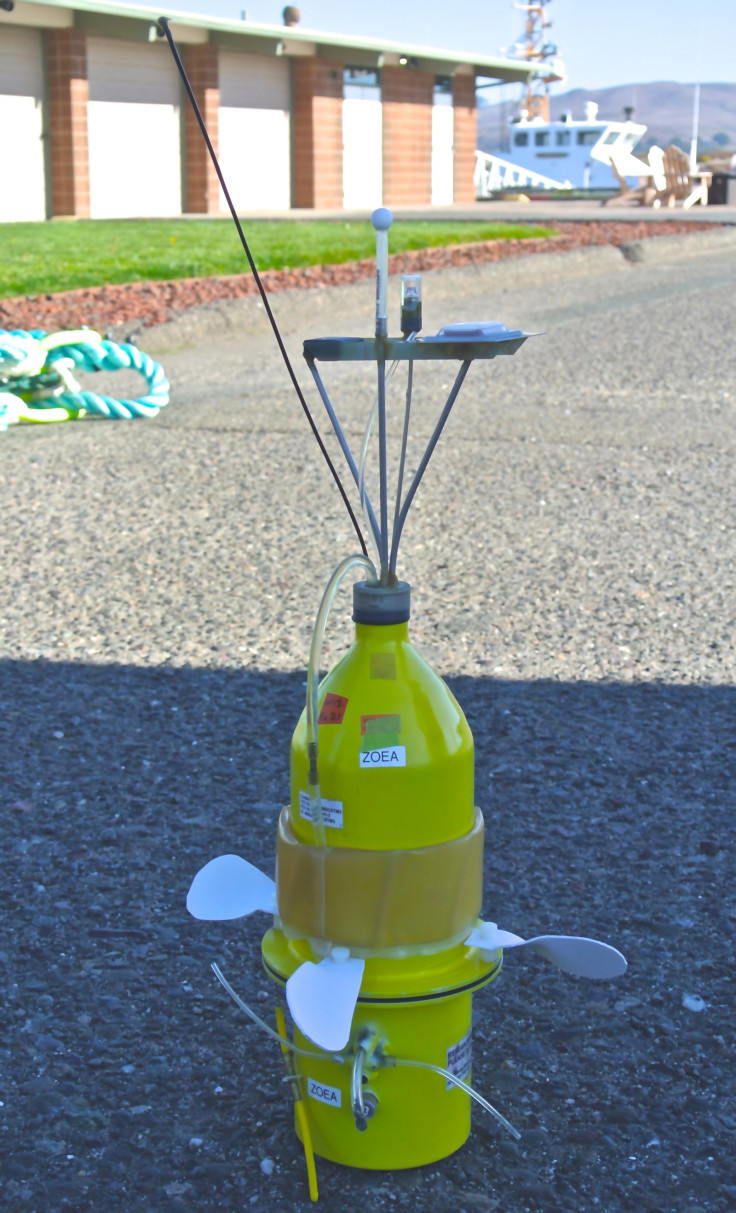Researchers release 'Minion'-like seabots to travel ocean currents amid climate change
Trackers hope 'seabots' will unlock mysteries of microscopic sea creatures in Pacific highway.

How do you track the behaviour of microscopic creatures like crab, shrimp and sea star larvae in a changing Pacific Ocean? You can't see — or tag — them in the ocean, so California scientists have designed trackable swimming robots they have trained to act like larvae so they can monitor them throughout the sea's currents.
Some 50 "seabots" are being set free off Bodega Bay by researchers from the University of California at Davis. The bots are made of recycled bright-yellow fire extinguishers, giving them the look of the cartoon Minions from Despicable Me, but with propellers.
They are packed with telemetrics including a buoyancy and navigation system, a gyroscope to estimate vertical speed, light and salinity sensors, pressure gauges, thermometers and antennae.
The ocean robots — called Autonomous Behaving Lagrangian Explorers (ABLE) — are programmed to pop up to to the ocean surface every 4 hours during their sea voyages to check in with satellites.
The millions of larvae travelling throughout the sea on what UC-Davis geochemist John Largier calls the Pacific Ocean "conveyor belt" of currents are far more sophisticated than initially thought, according to the scientists.
Larvae are believed to simply be picked up and carried by the current, but in fact they control the depth of their movement at different times of their development, marine ecologist Steven Morgan, who heads the bot project, told IBTimesUK.
Many of the larvae stay deep under water level, to avoid surface currents, and control how far and fast they travel, according to Morgan.
The larvae also likely hug the coast much closer than previously thought, and move up and down in water columns before returning to shore using currents like an ocean highway, he said.

"These tiny larvae are out in the ocean developing for weeks and months. How do they get back to shore?" Morgan asks. "Scientists have been trying to answer this question for decades."
Morgan believes larvae are pre-programmed by genetics to return to shore, using environmental cues and evolved sensitivities to current and pressure in a column of water.
Understanding how larvae, a fundamental building block of the food chain, move through the sea is important for managing fisheries, designing marine reserves, and controlling invasive species, says Morgan.
They can also be important markers for any serious changes in ocean currents due to global warming.
A single female marine organism can release hundreds of thousands of larvae in one shot. Despite the overwhelming numbers, microscopic offspring could be extremely vulnerable to warming in the Pacific's circulatory system, Morgan warns.
"How can you effectively manage something if you don't know where it goes, how it got there and how it gets back?" Morgan asked. "It matters, not only to life in the sea, but to us."
© Copyright IBTimes 2025. All rights reserved.






















